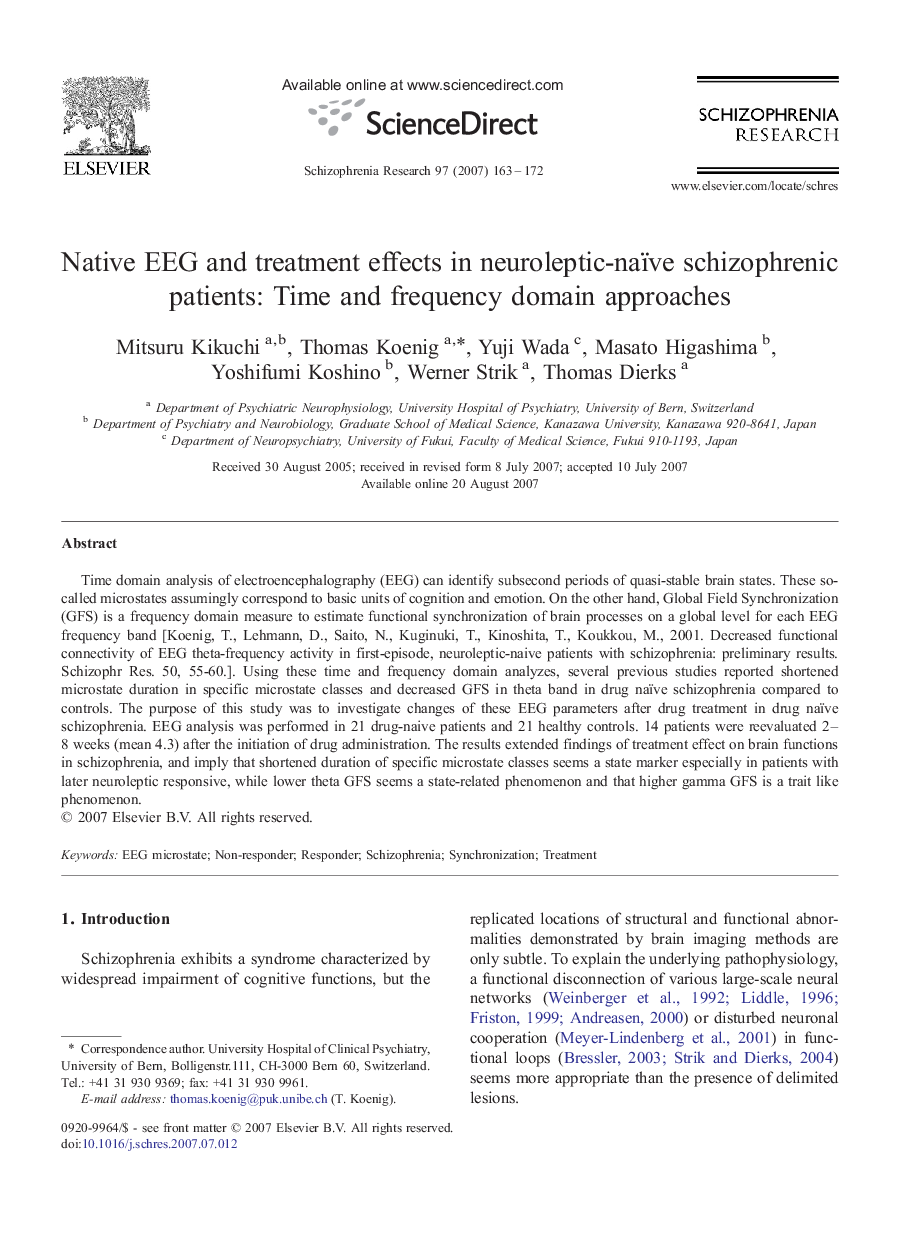| Article ID | Journal | Published Year | Pages | File Type |
|---|---|---|---|---|
| 341995 | Schizophrenia Research | 2007 | 10 Pages |
Time domain analysis of electroencephalography (EEG) can identify subsecond periods of quasi-stable brain states. These so-called microstates assumingly correspond to basic units of cognition and emotion. On the other hand, Global Field Synchronization (GFS) is a frequency domain measure to estimate functional synchronization of brain processes on a global level for each EEG frequency band [Koenig, T., Lehmann, D., Saito, N., Kuginuki, T., Kinoshita, T., Koukkou, M., 2001. Decreased functional connectivity of EEG theta-frequency activity in first-episode, neuroleptic-naive patients with schizophrenia: preliminary results. Schizophr Res. 50, 55-60.]. Using these time and frequency domain analyzes, several previous studies reported shortened microstate duration in specific microstate classes and decreased GFS in theta band in drug naïve schizophrenia compared to controls. The purpose of this study was to investigate changes of these EEG parameters after drug treatment in drug naïve schizophrenia. EEG analysis was performed in 21 drug-naive patients and 21 healthy controls. 14 patients were reevaluated 2–8 weeks (mean 4.3) after the initiation of drug administration. The results extended findings of treatment effect on brain functions in schizophrenia, and imply that shortened duration of specific microstate classes seems a state marker especially in patients with later neuroleptic responsive, while lower theta GFS seems a state-related phenomenon and that higher gamma GFS is a trait like phenomenon.
